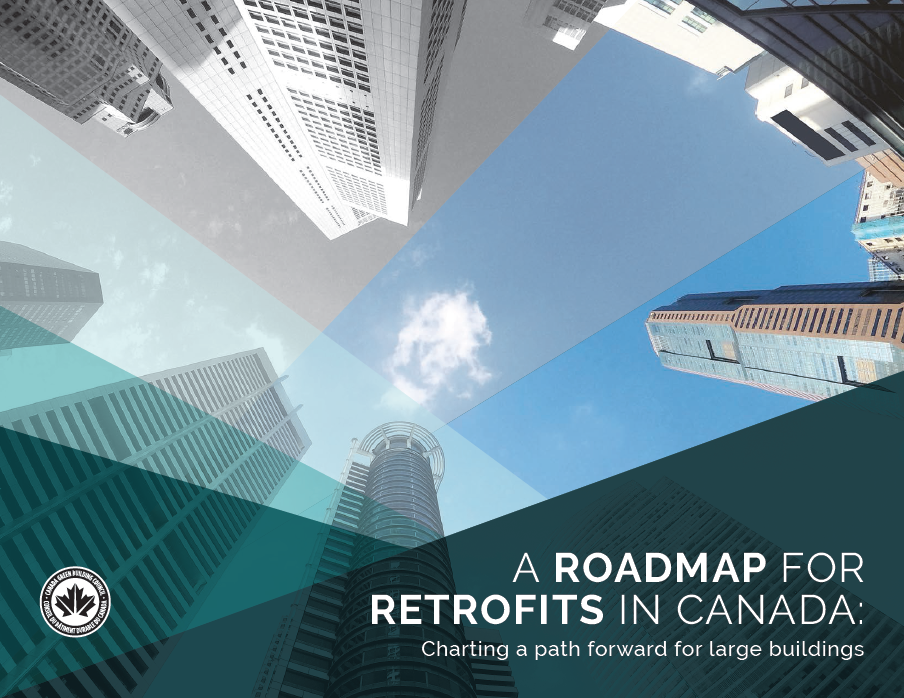
CaGBC report recommends nationwide retrofit strategy
September 25, 2017
By
CCE
Developed by WSP for CaGBC, the report provides recommendations that will contribute to achieving a reduction in GHG emissions of at least 30% and up to 51% by 2030.
 A new report released by the Canada Green Building Council (CaGBC) delivers a roadmap for reducing greenhouse gas emissions from large buildings like office towers, recreation centres, hospitals, arenas and schools across the country.
A new report released by the Canada Green Building Council (CaGBC) delivers a roadmap for reducing greenhouse gas emissions from large buildings like office towers, recreation centres, hospitals, arenas and schools across the country.
Developed by WSP for CaGBC, the report A Roadmap for Retrofits in Canada demonstrates the role that existing buildings play in realizing Canada’s low carbon future. The report provides recommendations to retrofit large buildings that will contribute to achieving a reduction in GHG emissions of at least 30% (or 12.5 million tonnes 1) by 2030, with the potential to reach 51% or 21.2 million tonnes.
The report identifies the buildings with the largest carbon reduction potential and recommends provincially-specific retrofit pathways that include a combination of recommissioning, deep retrofits, renewable energy, and fuel switching actions.
Among its key findings, the Roadmap concludes that:
- achieving a 30% (and potentially 51%) building emissions reduction by 2030 is achievable by focusing on a targeted number of buildings that have the greatest potential to reduce carbon.
- office buildings, shopping malls, universities, and arenas constructed between 1960 and 1979 across all provinces represent the age class with the largest opportunity for total carbon emissions reductions.
- Alberta and Ontario currently emit the most carbon and therefore have the greatest potential for reducing emissions. This is due to the carbon intensity of Alberta’s electricity grid and the number of large buildings in Ontario.
- all provinces will need to prioritize recommissioning for large buildings (between 25,000 and 200,000 sq.ft) and deep retrofits for older buildings (over 35 years old) in order to meet the target. These two actions will reduce emissions by a collective total of 4.1 MT CO2e, providing 62% of the reduction activity needed.
- fuel switching must be completed in 20% of buildings over 35 years old across Canada. Currently, fuel switching is particularly attractive in provinces with clean electricity grids such as BC, Manitoba, Quebec, New Brunswick and Newfoundland. In these regions, significant effort should be put into increasing the adoption of highly efficient heat pump technology. This will reduce emissions by 1.6 MT CO2e, or 25% of the reduction activity needed.
- in provinces with carbon intense electricity grids, specifically Alberta, Saskatchewan, New Brunswick and Nova Scotia, 30% of buildings will need to use renewable energy in order to meet the target. This will reduce emissions by 0.9 MT CO2e, representing 13% of the reduction activity needed.
“This report makes it very clear that targeted strategic investments in existing buildings represent a massive opportunity for significant carbon reductions across the country,” said Thomas Mueller, president and CEO of CaGBC in a media release. “We are showing how each region can contribute to meeting Canada’s climate change goals through a targeted approach to building retrofit and clean energy. Governments at all levels are encouraged to develop progressive policies and programs to guide investment and support for establishing a robust retrofit economy in Canada.”
The report provides the following policy recommendations for the Federal Government:
- include a GHG metric in Canada’s future retrofit building code;
- develop regional retrofit roadmaps;
- prioritize investments in scalable retrofit projects;
- and support mandatory energy benchmarking.
A Roadmap for Retrofits in Canada will be followed by a third CaGBC report, to be published in Spring 2018, which will provide policy options that would overcome barriers that hinder the implementation of retrofit projects and identify the financing mechanisms necessary to stimulate the retrofit economy.
CaGBC acknowledges that the report was made possible through the generous support of the Real Estate Foundation of British Columbia.